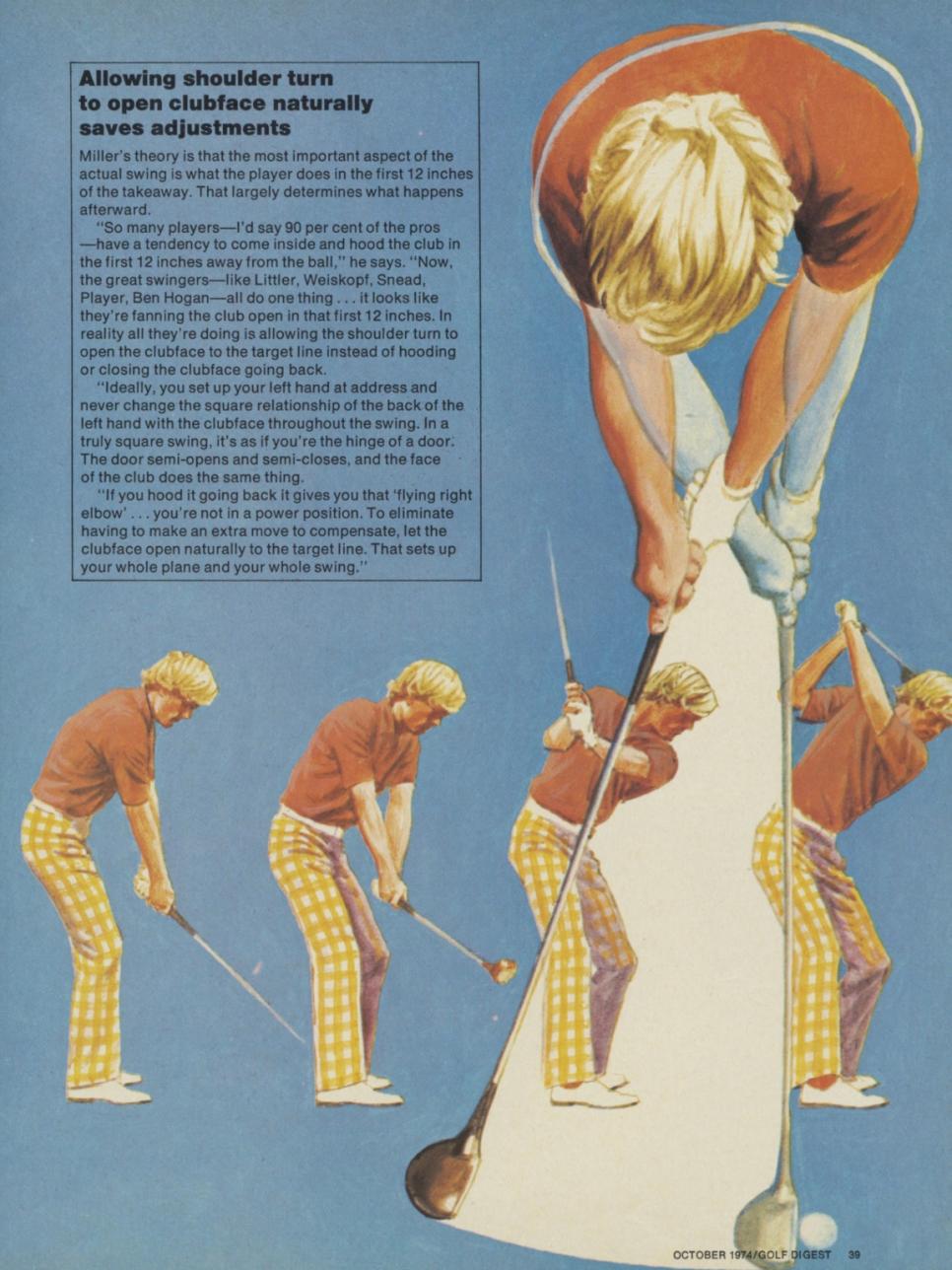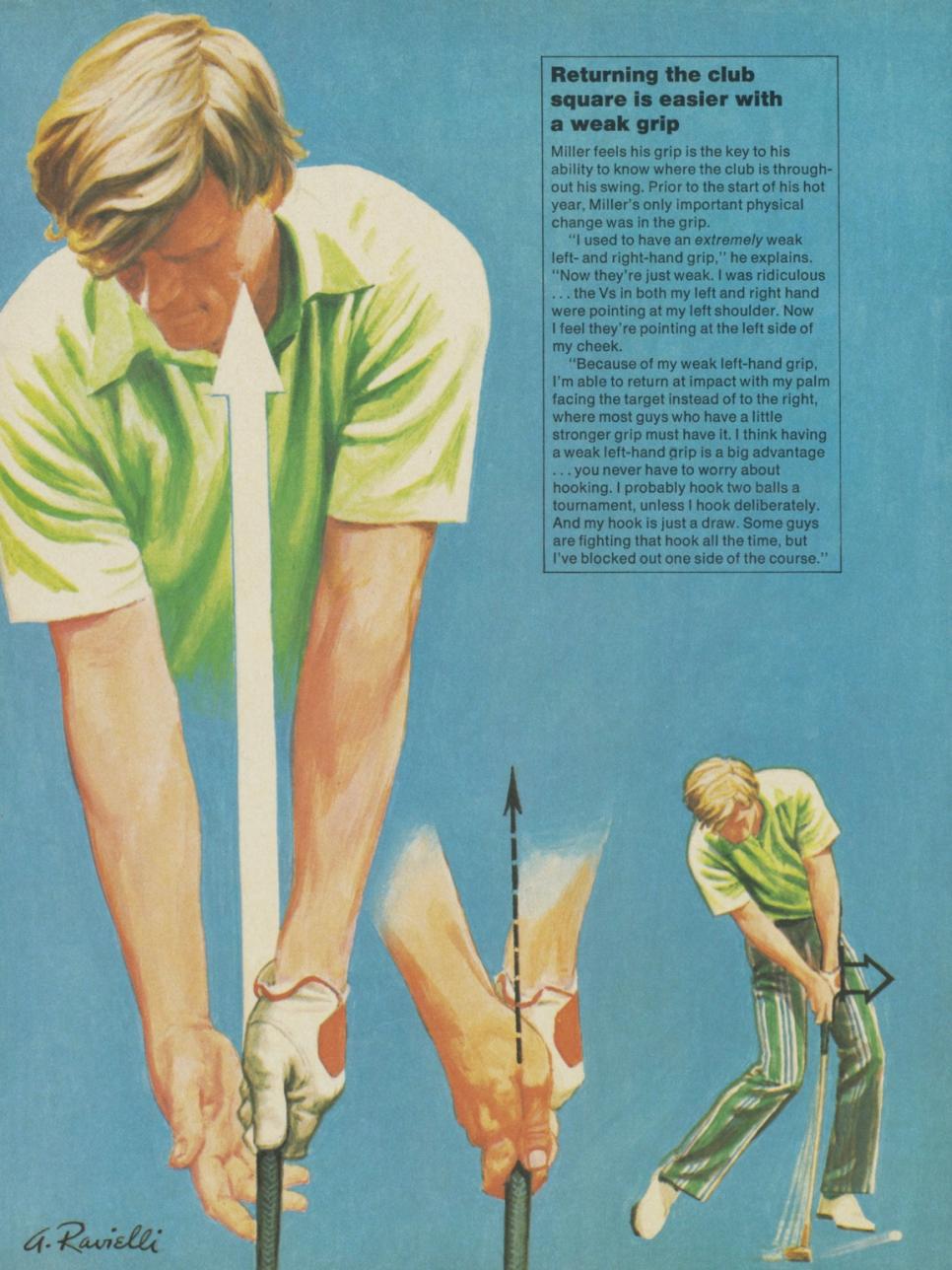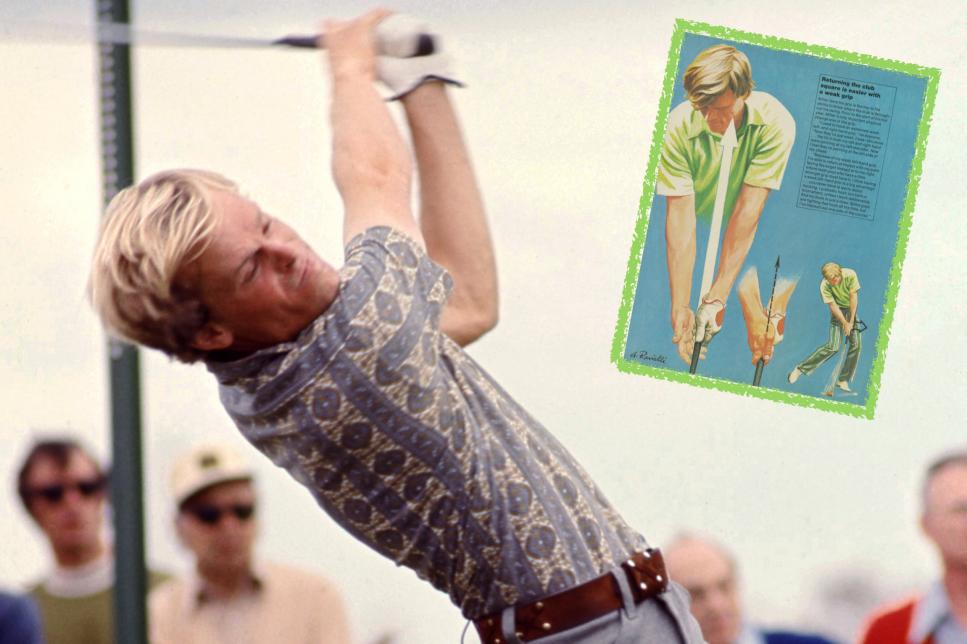Who was the greatest ball striker of all time? You won’t get far down the list until you hear the name Johnny Miller.
Johnny Miller swung with speed, and style, and astounding precision. He inspired a generation of golfers, and he remains a legend to this day.
But of all the talk about the man himself and his iconic golf swing, pundits often gloss over Miller’s only connection to the golf club itself: His ingenious and slightly unusual, grip. It was Miller’s hand placement was the secret ingredient to his golf swing. Its most crucial detail, and the one thing that made it all work.
You can watch the full video below:
Exactly 50 years ago this week, Miller played what many people consider the best round of golf ever played.
During the final round of the 1973 U.S. Open at the brutally difficult Oakmont Country Club, on a day when just three other players broke 70, Johnny Miller shot 63. A record. He hit all 18 greens in regulation, and birdied 9 of his 18 holes. He hit ten of his approach shots inside 15 feet and five five were inside six feet. A statistical analysis of the round, years later, found Miller gained 8.9 strokes from tee-to-green; almost a stroke-and-a-half more than Tiger’s best-ever ball striking round on the PGA Tour.
"People don't believe it, but that day my average iron shot from where I was aiming was probably this about five feet off line," Miller said earlier in the week. I was like knocking the flag out of the green with my irons and keeping it under the hole, too. It was like somebody was helping me up there. It was not a normal round.
Miller started the day in 13th place. He ended it a U.S. Open champion.
When people think of golf swings, like Miller’s, they tend to think of them like aiming at a bullseye. There’s a perfect, ideal way to swing a golf club. Think Adam Scott. The closer you are to that bullseye, the better.
But it’s better to think about golf swings more like a game of checkers. It’s just a combination of moves. Your best move just depends on what your previous moves were.
Johnny Miller’s golf swing game of checkers started with his grip.
Most golfers grip the club so their left thumb runs down the right side of the grip. Johnny Miller gripped the club so his left thumb ran more down the middle of the grip. He had what’s become known as a “weak” left hand grip, though Johnny never liked that description. It’s just what felt natural to him.
The issue lots of golfers run into with weak grips is that can often cause the wrists to roll the clubface open. It kind of did for Johnny Miller, too. That’s why Miller’s clubface is wide open at the top of his backswing. Most golfers, from this position, would hit big slices.

But Johnny Miller isn’t the only top golfer to have a weak grip. Jon Rahm has one, too, and like Miller he used it it in a really innovative way.
For Miller, his weak grip worked for two reasons.
The first was that it allowed him to swing hard. To swing really, incredibly hard. And this was important. The early 70s was an era where the dominant players were bombers. Jack Nicklaus and Gary Player and Tom Watson. Miller was tall and athletic but he was also pretty lanky. He needed every extra piece of horsepower he could get.
So Miller learned to swing out of his shoes. He made a huge turn on the backswing.
And he launched his body into the ball on the downswing. He’d often lose his footwork along the way.
Miller was swinging with everything he had, and he could do this because of that weak grip.
(If you're into all this golf nerd stuff by the way, check out our amazing Golf Digest Archive right here).
Some players would start hitting hooks swinging this hard, with so much wrist action, but not Miller. His clubface was so open to begin with, he could swing as hard as he could without fear of ever hooking the ball.
Similar to Dustin Johnson, another Oakmont U.S. Open winner, or Ben Hogan, swinging hard became Miller’s way of hitting it straight. He could try to hook it, but he just kept hitting fades.
The other key component of Miller’s grip was that it gave him an awareness of where the clubface was during the crucial milliseconds around impact. Running his left thumb down the middle of the shaft meant the back of Miller’s lead hand and clubface were aligned with each other throughout the swing.

Miller knew that if the back of his lead hand was pointing towards his target, the clubface would be too — and the ball would go there. It made the club a virtual extension of his left arm. The two moved together. It meant that even though he was swinging out of his shoes, Miller always had a sense of where the clubface was during his swing. He learned to control it and manipulate it, even in the fractions of a second before he hit the ball.
It came together to make Johnny Miller one of the greatest ball strikers of all time. A golf swing with power and precision, and one that wouldn’t become undone by the curse of swinging too hard. His exacting fade that could pick the lock of any golf course, including even the mighty Oakmont in the U.S. Open that day 50 years ago.
You can check out the full video below, and lots of amazing Johnny Miller content in our archive right here.
